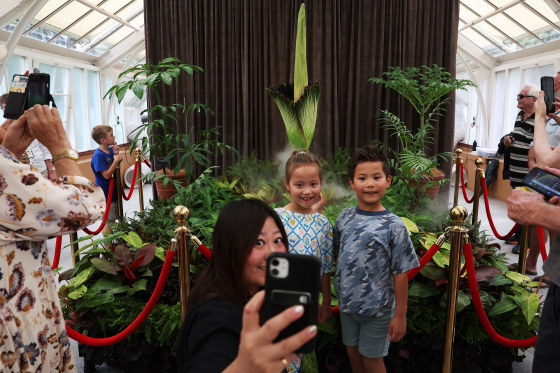The stench of death would normally repel sightseers, not attract them.
But this week in Sydney, a city known for its beaches and vibrant food scene, crowds flocked to catch a glimpse — and a whiff — of a rare flower whose scent has been lovingly compared to that of rotting flesh.
Lines of visitors gathered at the Australian city's Royal Botanic Garden to witness the blooming of the rare and endangered flower Amorphophallus titanum, also known as the "corpse flower," which opens once every few years for just 24 hours.
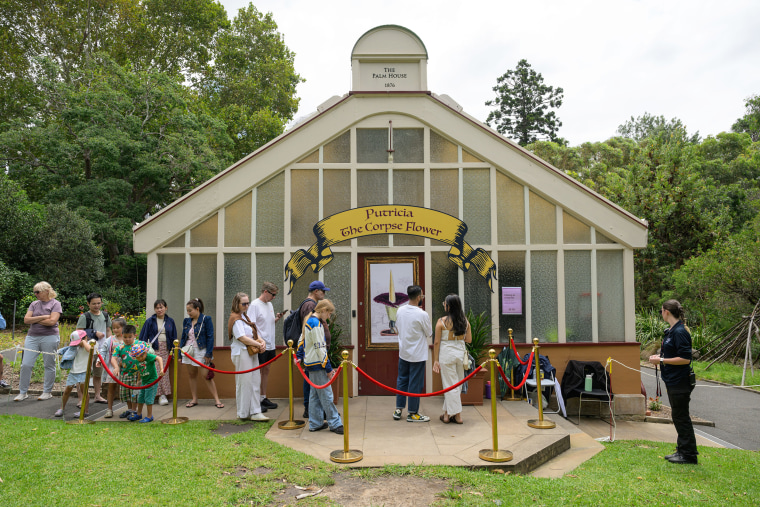
In a small glasshouse, set back among the lush green trees of the botanical gardens, onlookers were asked to stand behind a red rope as they patiently waited to catch a glimpse of the tropical plant, which is typically found only in the rainforests of western Indonesia.

Fans of the specimen know it as "Putricia" — a portmanteau of "putrid" and "Patricia" — and, naturally, refer to themselves as "Putricians." For the past week, she has sat on a stately, gothic display wreathed in mist from a humidifier and against the backdrop of a purple curtain.
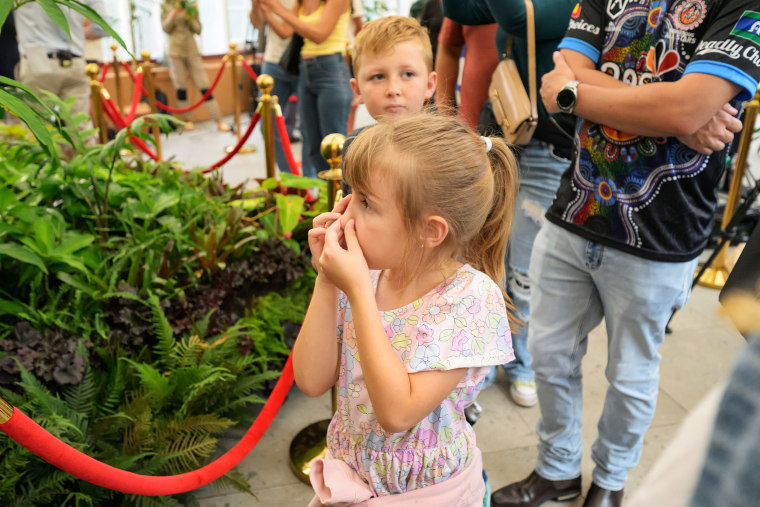
The fact that Putricia is the first corpse flower to bloom at the garden in 15 years has fueled her rapid rise to fame. Up to 20,000 admirers have filed past for a moment in her increasingly pungent presence.
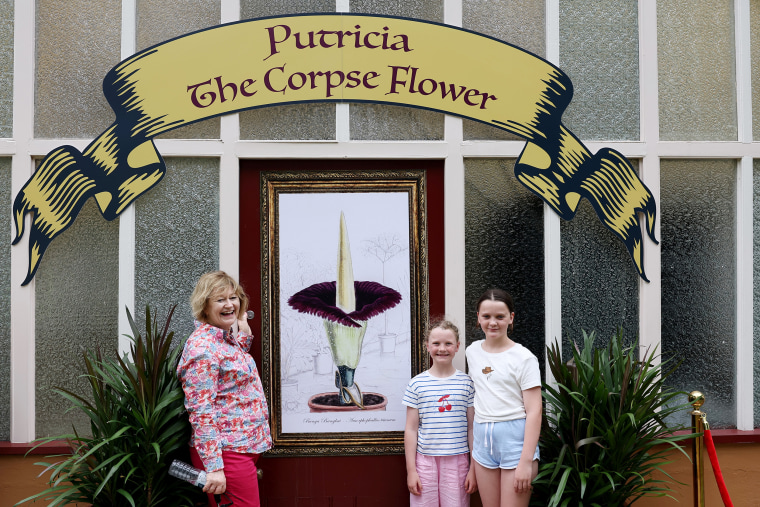
At 3:30 p.m. local time Thursday (11:30 p.m. Wednesday ET) staff emerged to tinker with Putricia's petals, gently encouraging them to unravel, while eager onlookers angled their phones to try to get her good side.
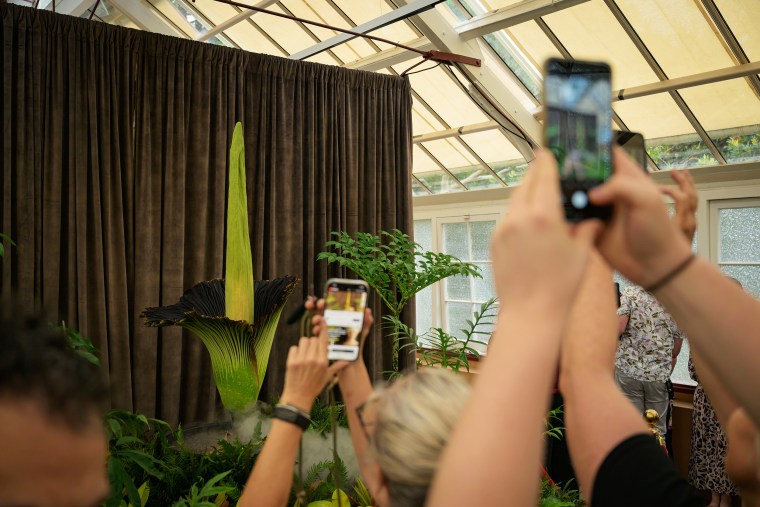
The stench, which has also been compared to wet socks and hot cat food, is all part of the flower's appeal, at least for those who want to see her in the flesh.
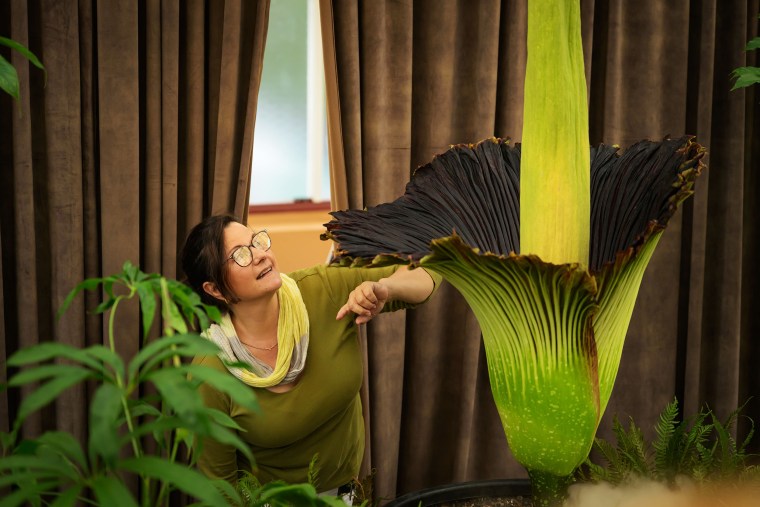
Along with her real-life visitors, Putricia’s online fandom has been global and bewildering, albeit less of an olfactory assault. A 24/7 livestream established by the botanical garden has drawn close to a million views in less than a week.
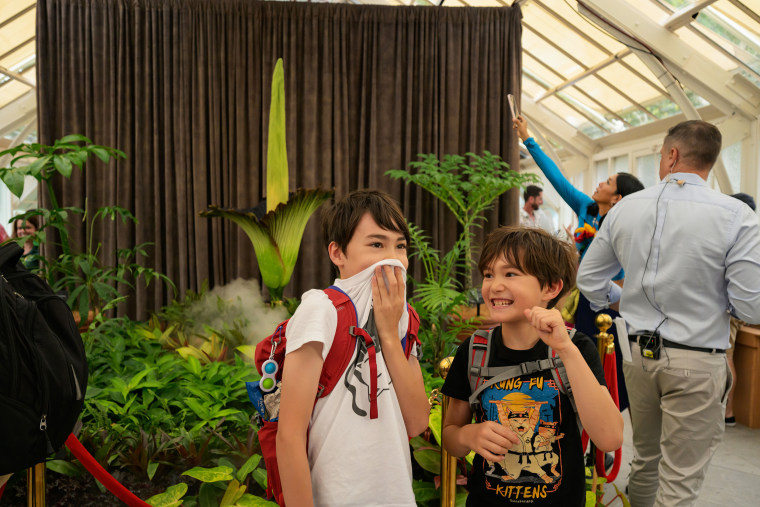
It's a prime example of scarcity driving demand, with commenters on social media saying they were making plans to hurry to the garden as the plant opened.
But they had to be quick. In just 24 hours, Putricia’s bloom — and her stench — would be gone.
